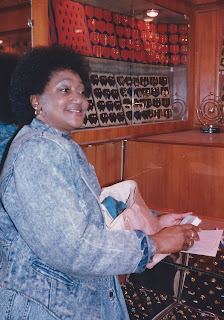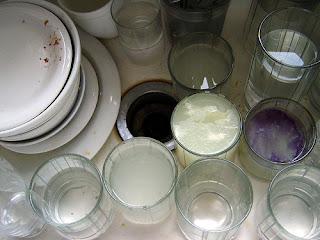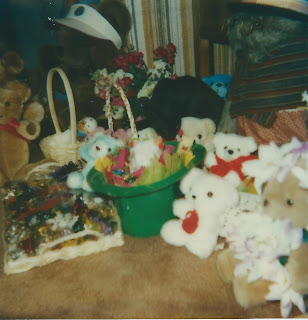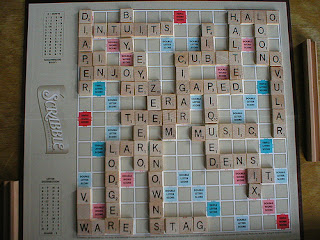 |
Image of entrance to Tehran bazaar
by basheem, via Flickr.com |
Doha had more than one area referred to as
the souq. The
old souq was a wooden covered structure that reminded me of the Tehran bazaar, except for its size. While I was in Tehran, Iran Air undertook a public relations campaign to let the world - or at least the West - know how progressive Iran was. That 1976 ad campaign posed lots of questions, such as "It's predicted that in 1990 the USA, Russia, Japan and West Germany will be the world's four leading industrial nations. Who's tipped to be No. 5?" The answer to all the questions was
Iran. One of those questions was "What country has the largest covered shopping mall?" No matter how much I enjoyed shopping in the bazaar, I never thought of it as a covered mall. It was something else.
The old souq was like the bazaar in many ways, but it was so much better. It was cozy. It invited customers to get to know the shop keepers, to establish relationships which made bargaining so much fun in contrast to the bargaining in Iran which seemed to be a matter of figuring out just how much insulting one another the two parties involved were willing to endure. But the old souq was made of wood and during the time I was in Doha, it burned.
There was a second traditional souq, not quite so old, but with lots of winding alley ways lined with shops organized so that all the shops that sold a particular set of items were together, a great convenience for the shoppers and incentive for the shop keepers to establish relationships with their customers. After all, if the shop next door sold the same items, staying in business didn't necessarily mean undercutting the competitors' prices. Customer loyalty was important in the souq.
 |
Image of souq waif in Doha, a modern souq made
to resemble the old souq, by jemasmith, via Flickr.com |
On one trip into this outdoor souq with friends, I purchased something at a shop very near where we parked the car. I hadn't realized that while I was taking out money to pay for my purchase, my Qatari drivers license fell out of my wallet and into a box that was behind the counter, just out of my sight. We continued shopping, and on our way back to the car a couple of hours later, we passed the same shop again. The shop keeper stopped us before we passed his shop in order to give me back my license. Using only gestures, he showed me where it had fallen. I thanked him and we were on our way.
Three weeks later, when I was filling out a mail order catalog order form, I looked for my credit cards in my wallet, but the holder I kept them in was missing. I tried to think of when I last used one of my credit cards - they weren't accepted anywhere in Doha - or where I had been where I might have removed the holder and forgotten to put it back. I retraced my steps over the previous three weeks, stopping in all the shops I could think of that I had been in and asked if I had dropped my credit card holder there. Eventually I remembered that my license had fallen out of my wallet in the souq, so I headed back to the same shop. Before I even got close enough to the shop to ask a question, the shop keeper reached down into the same box he had shown me when he gave me back my license and he handed me the folder with my credit cards. He gestured some more to let me know that the holder had fallen onto the floor of the shop, not into the box, so he hadn't noticed it until later. I was astonished first, that he had found them, second, that he had kept them, and third, that he recognized me after three weeks without my having to say anything. The cards did not have my photograph on them or any other way for someone to recognize that they were mine. But shop keepers in the souq develop relationships with their customers, even if the customers don't realize it. He wouldn't take any money from me for returning the cards so the next day I brought him a very large tray of baked treats that he could share with his other customers.
 |
Image of dresses from the 1930s
by vintage stitches, via Flickr.com |
There were also buildings referred to as souqs although I always thought of both souq and bazaar referring to open air markets - just one more reason that I could never think of the Tehran bazaar as a mall, even though it was largely covered. One of those souqs was a fabric souq we referred to as the 5 riyal souq because nearly all the merchants there sold their fabric at 5 riyals (about $1.35) a meter. This souq was one of my favorites.
Gloria and I had found a seamstress who could take our purchases and turn them into fabulous items based on little more than a picture or a description. We would head into the five riyal souk to pick up several 5-meter lengths of fabric in one shop and just as we gave our first indication that we were ready to leave, the shop keeper would offer us something to drink - tea or a soft drink. They were developing relationships with us. The hospitality benefited everyone. Someone would pull out chairs from a back room for us to sit on, we would feel refreshed, and we would inevitably see just one more bolt up on a shelf that needed to be added to our bags.
The most practical reason for having clothes made in Doha was that the styles available in the west didn't always meet the modest standards of the middle east. Before leaving for Doha, I went in search of a dress that didn't leave too much of my legs, arms, back, or front exposed so that I could wear it to receptions in the evening. So long as I had only retail outlets to shop in, I couldn't find anything modest enough except for dresses with tags hanging from them which read
as seen in Modern Bride. They were clearly not bridal gowns or bridesmaid's dresses. That left only mother-of-the-bride dresses which I wasn't about to accept since I still hadn't acknowledged I was closing in on the age where I could have had a child of marriageable age. The only shop I could find a suitable dress was one that sold vintage clothing. And that opened up the idea of having clothing made in Doha based on styles from the 1920s, 1930s and 1940s.
 |
| Sandra with our Doha seamstress |
But the real reason I had clothes made was that it was fun to see piles of fabric turned into dresses, suits, blouses and pants that couldn't be purchased from any store or mail order catalog. The price for most items was about 100 riyals ($35), a very acceptable price for tailored, one-of-a-kind items. Gloria and I would bring in bags of clothing with pictures or descriptions of what we wanted. Two or three weeks later we would return to see if anything was ready for the first fitting. On those occasions, we usually had more fabric to turn over, making sure our seamstress always had more to do for us.
One day our seamstress called us to let us know that she had finished everything we had brought in for her. What she didn't tell us is that the reason she had finished everything was that she was leaving Doha to return to the Philippines. So we brought in even more fabric for her to make up for us. She waited until we had explained all that we wanted before she told us that she was leaving so that someone else would have to make up the items for us. We didn't worry, however, because there was another woman in the shop we called Mom who always checked over everything our seamstress did for us. Mom didn't do the sewing, but she was in charge.
Unfortunately, Mom's oversight wasn't enough to make up for the difference in the talents of the other seamstresses and tailors. It was fun while it lasted.






































